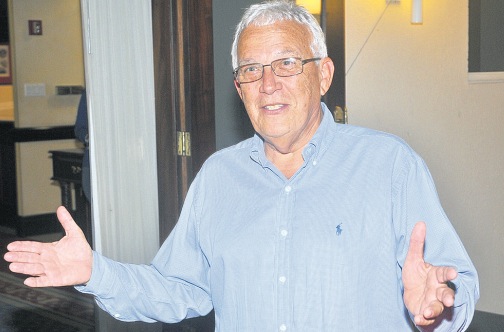Every organization exists in order to serve people. Its goodwill and image are dependent upon the standards of its ser¬vices. Its long-term success or failure is also influenced by the quality of its ser¬vices. Consequently, most organizations strive to provide a good standard of ser¬vice. Some, however, do not clearly define the detailed standards. The result is that they have some vague notions about what they seek to achieve. Some aspects of this subject are set out in this article.
STANDARDS NEEDED FOR EVERY ACTIVITY
Depending on the nature of the opera¬tions, every organization has to provide services in various ways. For every activ¬ity, again, there are several stages of deal¬ing with people. A service is rendered at each stage of every aspect of its work. Thus, a standard of service needs to be established for every activity and its vari¬ous stages or aspects.
The exact details of the aspects or stages and types of services will differ from one organization to another. All organizations, e.g. hotels, retailers, insur¬ance companies, banks, courts, post offices, professional bodies, practicing professionals, and so on must define the standards for each stage of their various services or activities.
DIMENSIONS OF SERVICE
For each aspect of the working of an organization, several matters or dimen¬sions need to be considered with a view to setting the standards of service. These may include the following:
Range of Services Provided
* Do you provide services for all aspects of work or products for which people need your services, e.g. do you repair all that you sell?
* Do you have other unrelated services as a part of your range or on your premises or in the vicinity, e.g. shoe repair, bakery, telephone booth, bank office, stock broker, and so on.
Times when provided
* What are your working hours?
* Do you open on holidays?
* Are these hours convenient for the people?
Location
* Are your locations convenient to people?
* How far do they have to travel to access your service?
Frequency
* What is the frequency of the service (e.g. bus, airline)?
Price
* What is the price of each service?
* How does the price compare with others nationally and internationally?
Time Taken
* How long it takes to provide each service (to answer a telephone call, to check in a customer in a hotel)?
* What are the arrangements to cope with the peak hour rush, e.g. in a bank or a supermarket or a hotel?
Physical Facilities
* How do the facilities look?
* Are they appropriate for the purpose?
* Are the facilities functionally efficient, well organized and clean?
* Do the customers find them adequate and comfortable.
Procedures
* Are the procedures simple?
* Are the forms easy to fill in?
* Is help available to comply with procedures?
* Are there too many stages of dealing with a matter or for approval?
Complaints
* Are there clear procedures to deal with complaints?
* How long does it take to deal with complaints of various types?
Communication
* Are all aspects of services communicated to all concerned?
* How effective and frequent are the communications?
Treatment of People
* How are people greeted and treated?
* Are they treated differently when they come up with complaints?
* Is the treatment the same for all customers – big or small?
* Is your staff courteous?
* Are managers easily accessible to service to people?
Monitoring
* Are systems in place to monitor the various aspects, review them and take appropriate action?
Comparisons
* How do your standards of service compare with those of others – nationally and internationally?
Responsiveness
* Is customer feedback obtained on a continuous basis?
* Are the standards of service continuously updated in response to customer reaction or needs?
* Do you innovate ways to serve people better?
The above are some of the dimen¬sions of service that each organization must consider. The importance or empha¬sis on each dimension will differ accord¬ing to the nature of the organization, oper¬ating environment, resources available, problems, management priorities, etc. In each case, however, there is a need for clear and conscious decisions and communications about the standards of service to all concerned.
STRENGTH DETERMINED BY WEAKEST LINK
The image of service of any organization can be spoilt by one single instance of delay, confusion, lack of courtesy or the like. Hence, it is important to remember that the strength of the service image of any organization is determined by its weakest link. That is why it is vital that standards of service are implemented for every stage of every activity and for all dimensions of service.
People are constantly judging all aspects of service for every activity of an organization. And people are the best judge. Hence, it is necessary to obtain feedback from the people on a continuous basis and make necessary changes in response to customer needs or reactions or at least explain to them the reasons why certain services cannot be rendered.
ADVANTAGES
There are several advantages of clear¬ly defining and implementing appropriate standards of service for every aspect of an organization.
Standards of service provided a basis for:
• Making appropriate policies, organization structure and training schemes (including cross-training and staff reallocation during rush hours).
• Allocating appropriate resources in terms of staff, budget, physical facilities and equipment.
• Selecting employees who share values and standards and are prepared to meet the standards.
• Inculcating the necessary values amongst employees.
• Comparing standards with those of others so as to keep the competitive edge.
• Improving the depth of understanding of the managers about their organization and customers leading to improvement in the quality of management.
• Improving employee efficiency by giving them appropriate training, targets of performance to strive for and constantly improve.
• Motivating employees to improve their performance.
• Conducting proper performance appraisal of employees.
• Rewarding and reprimanding employees.
• Improving the organization’s image.
• Developing an appropriate organization culture.
Thus, standards of service can be very helpful in improving the efficiency of an organization and its image amongst its employees and the public. They can also help in improving national productivity and quality of life of people.
EXAMPLES
Some examples of the various aspects of service in specific types of organizations can clarify the above concepts. Some examples of service for two types of businesses are given below. Similar ones should be developed by every organization.
UTILITIES
These include water, electricity, and telephone companies or corporations. Various dimensions of service, i.e. loca¬tion, time taken, frequency, price, physical facilities, procedures, complaints, cus-tomer responsiveness, comparisons with other utilities (or even other organizations) nationally an internationally in respect of :
o Opening accounts o Concessions to people in distress
o Closing accounts o Treatment of dishonoured cheques
o Getting statements o Information made available to the public
o Reconnections o Telephone calls
o Disconnections o Making refunds
o Copy statements o Parking facilities
o Correction of mistakes o Public access to managers
o Investigation of wrong charges
o Enquiry about any matter
o Replies to letters
o Dealing with complaints
o Bills
o Public education as to the use of the services
o Charges for each service compared with similar services rendered by others.
For these and other areas of activity, each utility company management should consider the various dimensions of service and define its short and long term stan¬dards of service. The standards can pro-, vide a good basis for various other plans and arrangements of the organization. For example, for bills, standards need to be defined as to the frequency of billing, dis¬patch of bills, lead time for payment, deal¬ing with cases where bills are incorrect or are delayed in mail or where they never reach the customers, people in financial distress, locations where payments can be made, days and hours when payments can be made, time taken for payment of bills, action on arrears according to amount due and period for which they are due, and so on. A careful analysis of these will enable management to put in place appropriate facilities, organization, procedures, etc.
RETAILING BUSINESS
The various dimensions of service should be considered in respect of each activity. Some of the activities are:
o Adequacy of range of products and services
o Layout facilitating selection of items
o Cleanliness
o Branches at locations convenient to customers
o Unique items sold
o Help available to find items
o Adequacy of checking out arrangements
o Parking facilities
o Rush hour arrangements
o Days and hours of opening
o Holiday opening hours
o Treatment of damaged or obsolete products
o Prices of products and services
o Discounts on bulk purchases
o Return of items by customers
o Quality of products carried and services rendered
o Ancillary services provided on its premises or in its vicinity
o Frequency, range and the amount of discount on spe¬cials
o Treatment of customers
o After sales services
o Home delivery service
A review of each dimension of service for each of these and other matters can be very helpful in improving the quality of ser¬vices rendered by retailing organizations. This can make a differ¬ence in their degree of success. One of the most successful supermarkets in the world has grown on the basis of quality of service. Guess which one!
The above are just some examples for types of organizations. Similar ones can be developed for all types of organizations including airlines, bus companies, schools, hospitals, hotels, banks, insurance companies, professional organizations, clubs, educational and training organizations, tax offices, cus¬toms, and so on.
CONCLUSION
People expect good quality service from every organization. Only by providing it can an organization project a good image and grow. The service, however, has to cover all the various activities. Further, all dimensions of service have to be covered. It is not enough to cover only some of them. People do not, for example, expect quick service rudely provided at a high price. They do not even expect a low price service provided by arro¬gant staff. They judge the quality of service by its weakest link.
Defining and implementing standards of service can provide several advantages to an organization and the community. Many success stories in the world are the result of good service. Wal Mart (USA) Supermarket is one such example. When some hotels in Hong Kong send Rolls Royces to pick up customers from the airports and then present them with flowers and fruits in the room, they are not just throwing money away. They are building a reputation and attracting business. No wonder they feature high in the world’s ranking of hotels.
Are you now ready to define and implement the standards of service for your organization? How would they compare with others?
Sushil K. Jain FCCA, FCIS, FCMA


 Businessuite Women2 weeks ago
Businessuite Women2 weeks ago
 Businessuite News244 weeks ago
Businessuite News244 weeks ago
 Businessuite News24 International4 weeks ago
Businessuite News24 International4 weeks ago
 Businessuite News243 weeks ago
Businessuite News243 weeks ago
 Corporate Feature4 weeks ago
Corporate Feature4 weeks ago
 Businessuite News245 days ago
Businessuite News245 days ago
 Business Insights2 weeks ago
Business Insights2 weeks ago
 Businessuite Markets3 weeks ago
Businessuite Markets3 weeks ago










 When Mr. Tyrone Wilson, Chairman, President, and CEO of Kintyre Holdings (JA) Limited, stepped into the additional role of Chief Executive Officer at Visual Vibe—alongside his existing portfolio—industry observers took note. His move, following the resignation of Chief Investment Officer Andrew Wildish, now consolidates strategic, operational, and governance control under one leader across the two connected companies.
When Mr. Tyrone Wilson, Chairman, President, and CEO of Kintyre Holdings (JA) Limited, stepped into the additional role of Chief Executive Officer at Visual Vibe—alongside his existing portfolio—industry observers took note. His move, following the resignation of Chief Investment Officer Andrew Wildish, now consolidates strategic, operational, and governance control under one leader across the two connected companies.
 1. Time Becomes Your Most Valuable Currency
1. Time Becomes Your Most Valuable Currency










